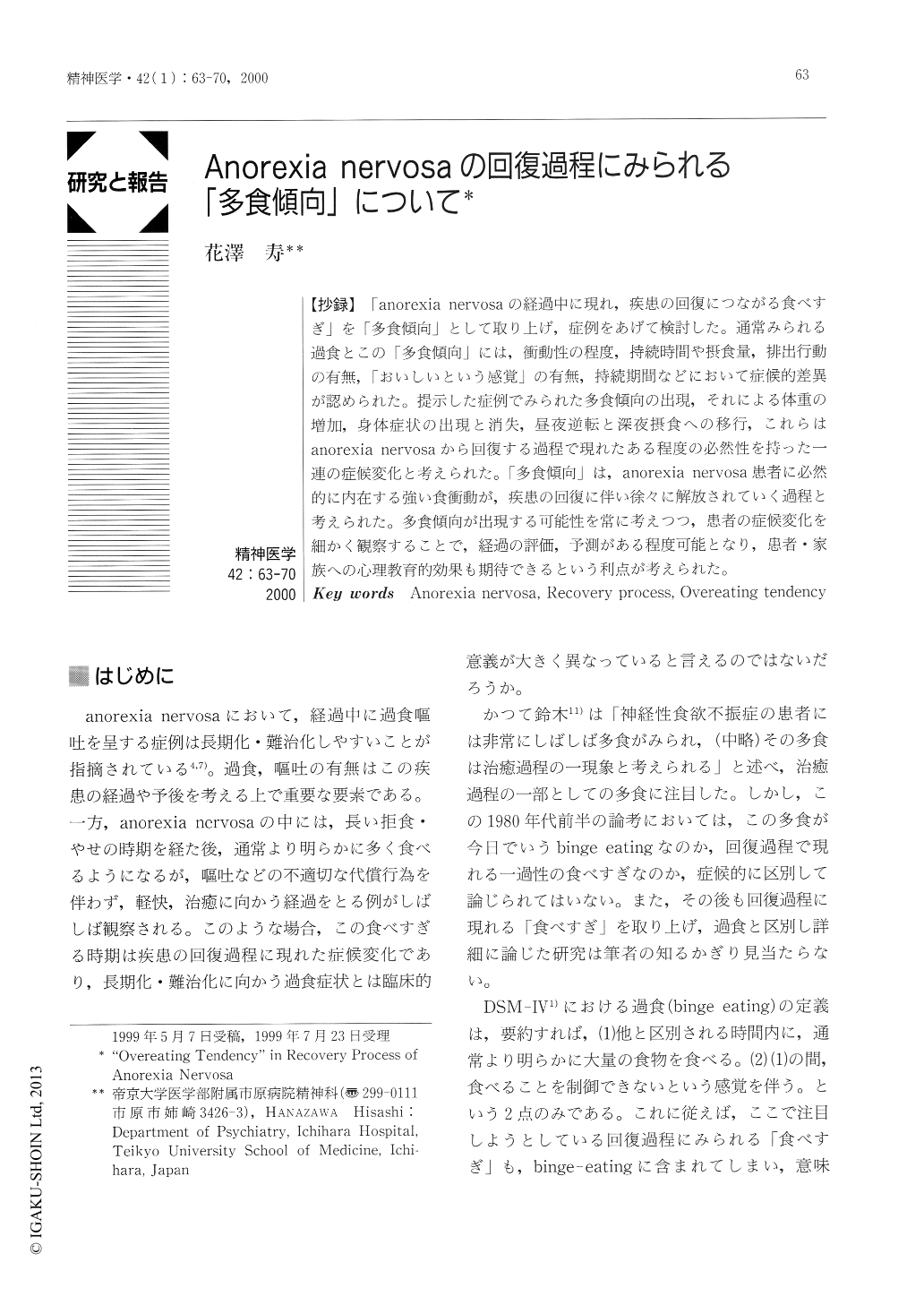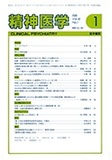Japanese
English
- 有料閲覧
- Abstract 文献概要
- 1ページ目 Look Inside
【抄録】 「anorexia nervosaの経過中に現れ,疾患の回復につながる食べすぎ」を「多食傾向」として取り上げ,症例をあげて検討した。通常みられる過食とこの「多食傾向」には,衝動性の程度,持続時間や摂食量,排出行動の有無,「おいしいという感覚」の有無,持続期間などにおいて症候的差異が認められた。提示した症例でみられた多食傾向の出現,それによる体重の増加,身体症状の出現と消失,昼夜逆転と深夜摂食への移行,これらはanorexia nervosaから回復する過程で現れたある程度の必然性を持った一連の症候変化と考えられた。「多食傾向」は,anorexia nervosa患者に必然的に内在する強い食衝動が,疾患の回復に伴い徐々に解放されていく過程と考えられた。多食傾向が出現する可能性を常に考えつつ,患者の症候変化を細かく観察することで,経過の評価,予測がある程度可能となり,患者・家族への心理教育的効果も期待できるという利点が考えられた。
Excessive eating in the course of allorexia nervosa which seemed to be related to therecovery of the illness was examined through a case report Compared to binge-eating, this 'overeating' tendency had characteristics such as less impulsivity, less volume of ingestion over a longer period of eating, lack of purging behavior, a better sense of taste, and a shorter duration.
In the case presented, a series of symptom changes including 'overeating', weight increase, emergence and disappearance of somatic complaints, reverse of sleep cycle, and excessive eatillg at midnight appeared to be related to and necessary for the recovery process of anorexia nervosa.
It is speculated that 'overeating' is a manifestation in the recovery process of anorexia nervosa in which a strong impulse for eating intrinsic to the illness is gradually being released. Careful observation of the change of symptom manifestations such as 'overeating' can lead to an evaluation and prediction of the course of the illness to some extent, which might have psychoeducational effects both for patients and for their families.

Copyright © 2000, Igaku-Shoin Ltd. All rights reserved.


